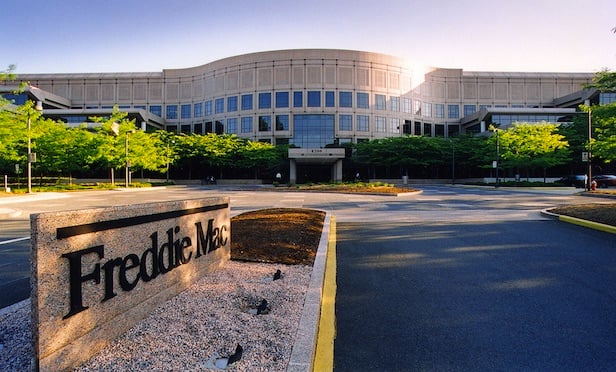McLEAN, VA–It is looking unlikely that either Freddie Mac or Fannie Mae will have used the 2017 multifamily lending caps of $36.5 billion that the Federal Housing Finance Agency set for the GSEs.
If so, it will be a telling development for a few reasons: one, it indicates that the uncapped businesses by the GSEs flourished for the year and two, it suggests that the reduced cap of $35 billion each that the FHFA set for 2018 should not hamper the multifamily finance market.
Not reaching their cap for 2017 also points to prudent lending on the part of Freddie Mac and Fannie Mae — even as they have stretched their programs to accommodate more collateral types and new structures.
For Freddie Mac's multifamily business, 2017 was a year of growth not only in terms of overall volume but also in the breadth of the type of product that it was able to securitize, David Brickman, EVP and head of Freddie Mac Multifamily, tells GlobeSt.com. One factor — or perhaps better put — one indication of its success, he says, was the support of the capital markets for Freddie Mac's offerings. “It has given us the ability to effectively raise the capital that's going to best meet a borrower's needs.”
Despite this, for 2018 Freddie Mac is expecting very modest growth overall — close to flat — in terms of aggregate business, according to Brickman. “We do expect growth in our small balance loan program and in some of the new initiatives we expect to launch as part of our duty to serve,” he says.
New Loan, Securitization Structures
One loan program that experienced substantial growth in 2017 was Freddie's green initiative, which had been slow to start in the past but has rapidly made up for lost time. The GSE expects it will have done about $17 billion in green finance for the year, “exceeding our expectations by a significant margin,” Brickman says.
The GSE also introduced a new execution for unsubsidized affordable housing, also known as naturally occurring affordable housing or NOAH. It was a departure from the GSE's usual affordable programs, in that it was a private-sector execution that didn't use federal subsidies or tax credits.
Freddie Mac's securitization activity was also robust last year, with the GSE launching about 80 separate deals, for a 30% increase over the previous year, Brickman says. The bulk of that was its flagship K-deals, which clocked in at $56 billion. Freddie also securitized a good bit of its small balance paper, across 19 deals for a total of about $5.5 billion.
The GSE also expanded its Q shelf with the launch of its first single-family rental home securitization and the introduction of two new products.
One is a standard retail mortgage for single-family home portfolios in which the GSE purchases mortgages originated by its seller servicer network. The other is a direct to securitization that is structured off of Freddie Mac's Q shelf. That means an originating lender has made multiple mortgages and aggregated them and Freddie provides liquidity for those mortgages through the securitization. It issues the securities, some of which are wrapped by Freddie Mac, which is consistent with the Q-shelf's risk transfer model.
“For us 2017 was all about innovation,” Brickman says. “We sought to increase the breadth of what we do on our different channels and platforms by introducing new products in both the mortgage and the securitization market.”
Save
Save
Save
Save
Save
Want to continue reading?
Become a Free ALM Digital Reader.
Once you are an ALM Digital Member, you’ll receive:
- Breaking commercial real estate news and analysis, on-site and via our newsletters and custom alerts
- Educational webcasts, white papers, and ebooks from industry thought leaders
- Critical coverage of the property casualty insurance and financial advisory markets on our other ALM sites, PropertyCasualty360 and ThinkAdvisor
Already have an account? Sign In Now
*May exclude premium content© 2024 ALM Global, LLC, All Rights Reserved. Request academic re-use from www.copyright.com. All other uses, submit a request to [email protected]. For more information visit Asset & Logo Licensing.









